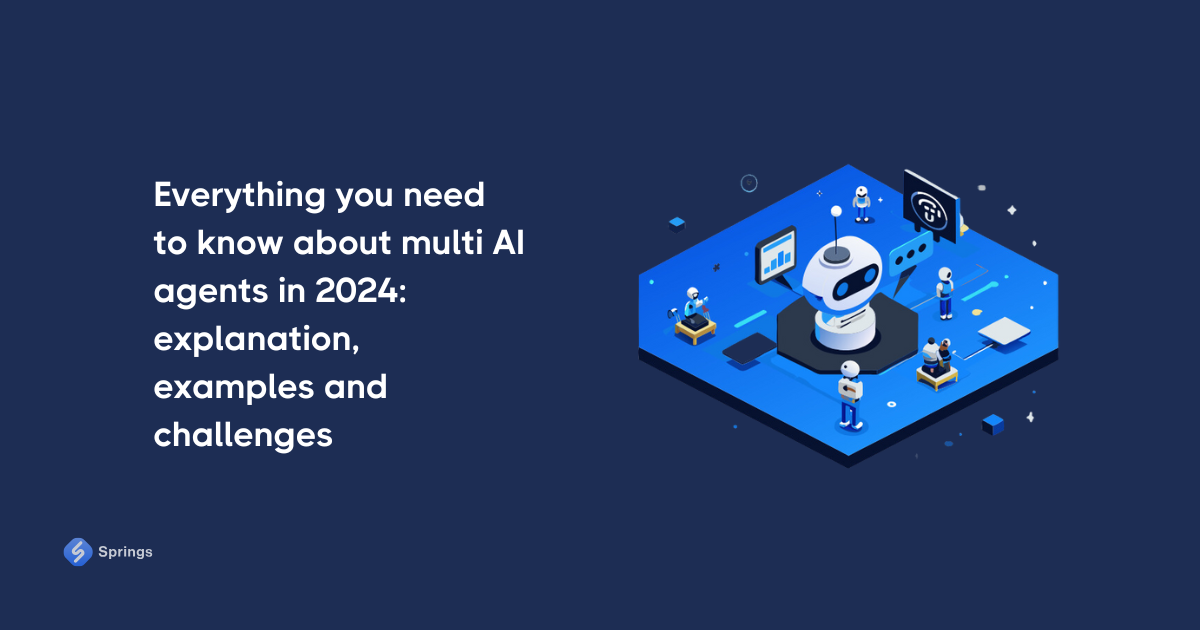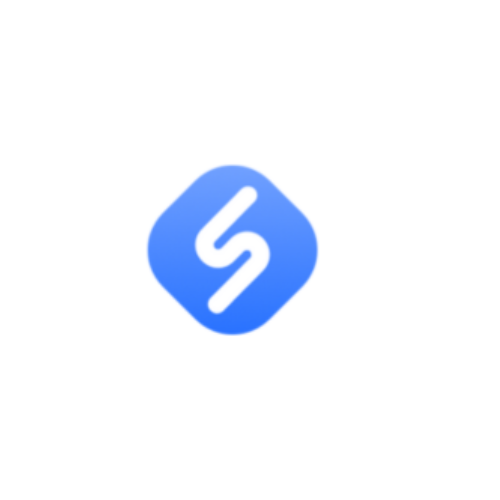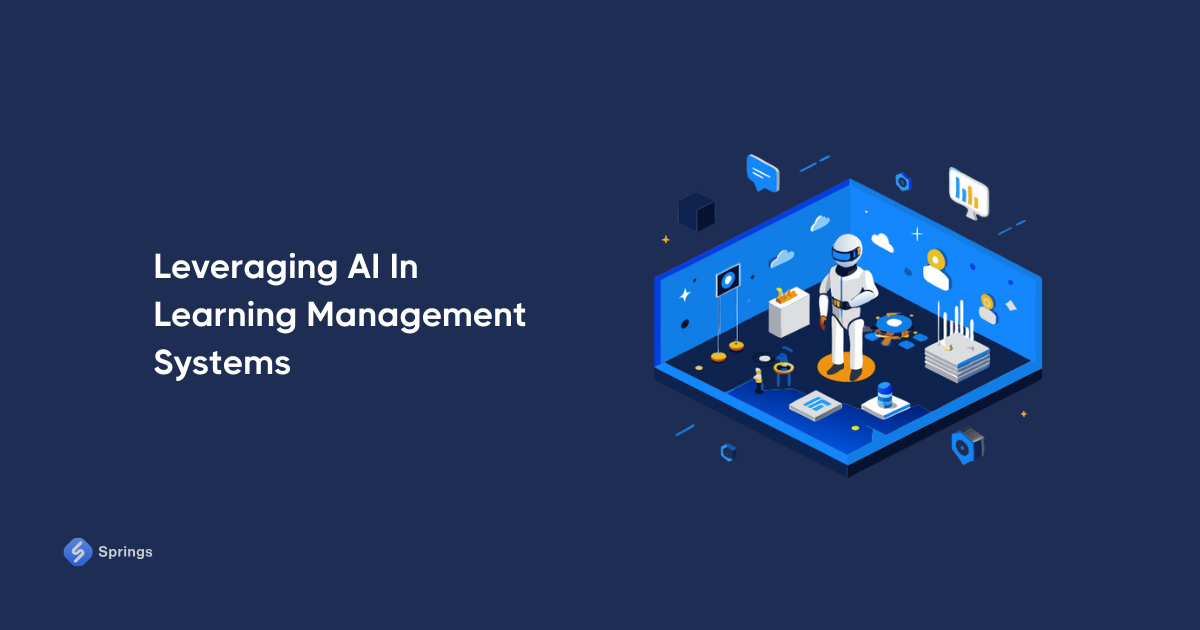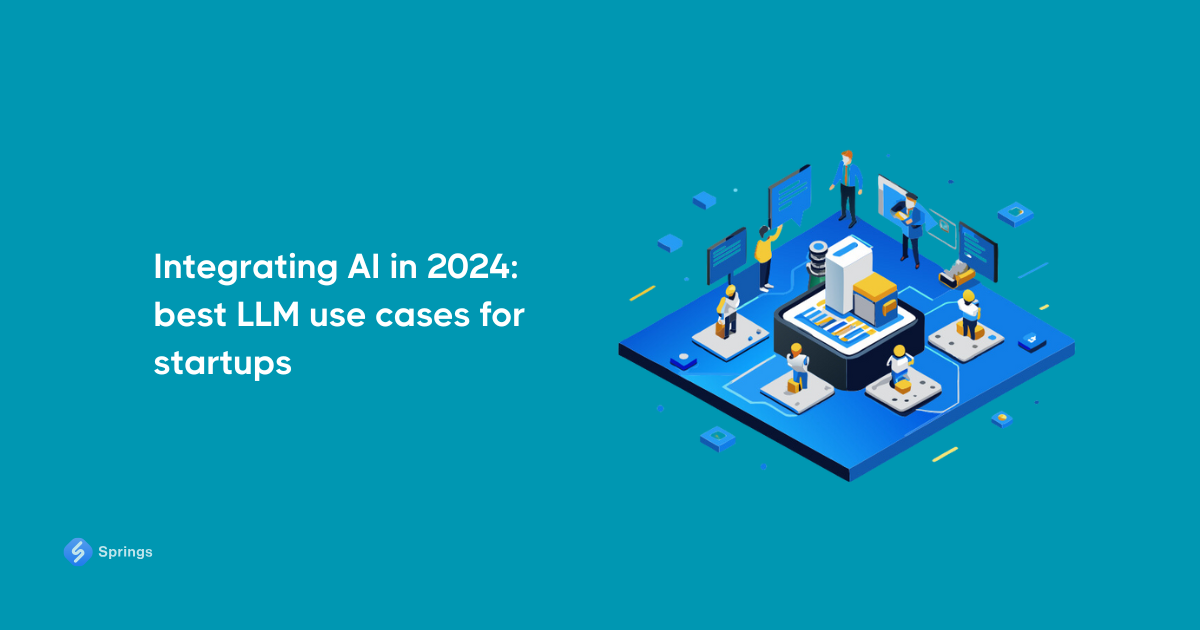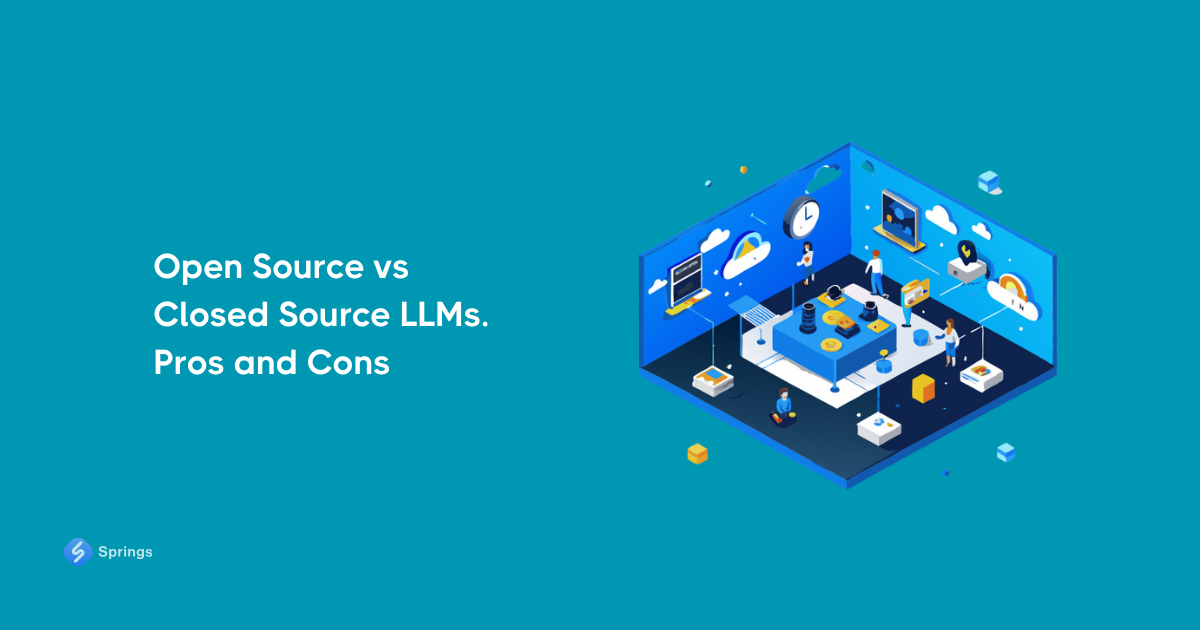What is an NLP Chatbot and how it differs from LLM Chatbots?
Intro
The era of NLP is moving to its peak step by step. We have already provided a full guide on NLP, NLU, and NLG in our previous articles, and now it is time to talk about the practical implementation of NLP in the modern AI solution that is used worldwide - NLP Chatbot.
NLP and Chatbots are the two words you may hear now almost every day if you are interested in the AI industry somehow. According to the Worldmetrics report, chatbots driven by NLP technology are estimated to handle up to 90% of customer inquiries. In other words, NLP bot becomes a new tool for customer support providing the highest level of satisfaction.
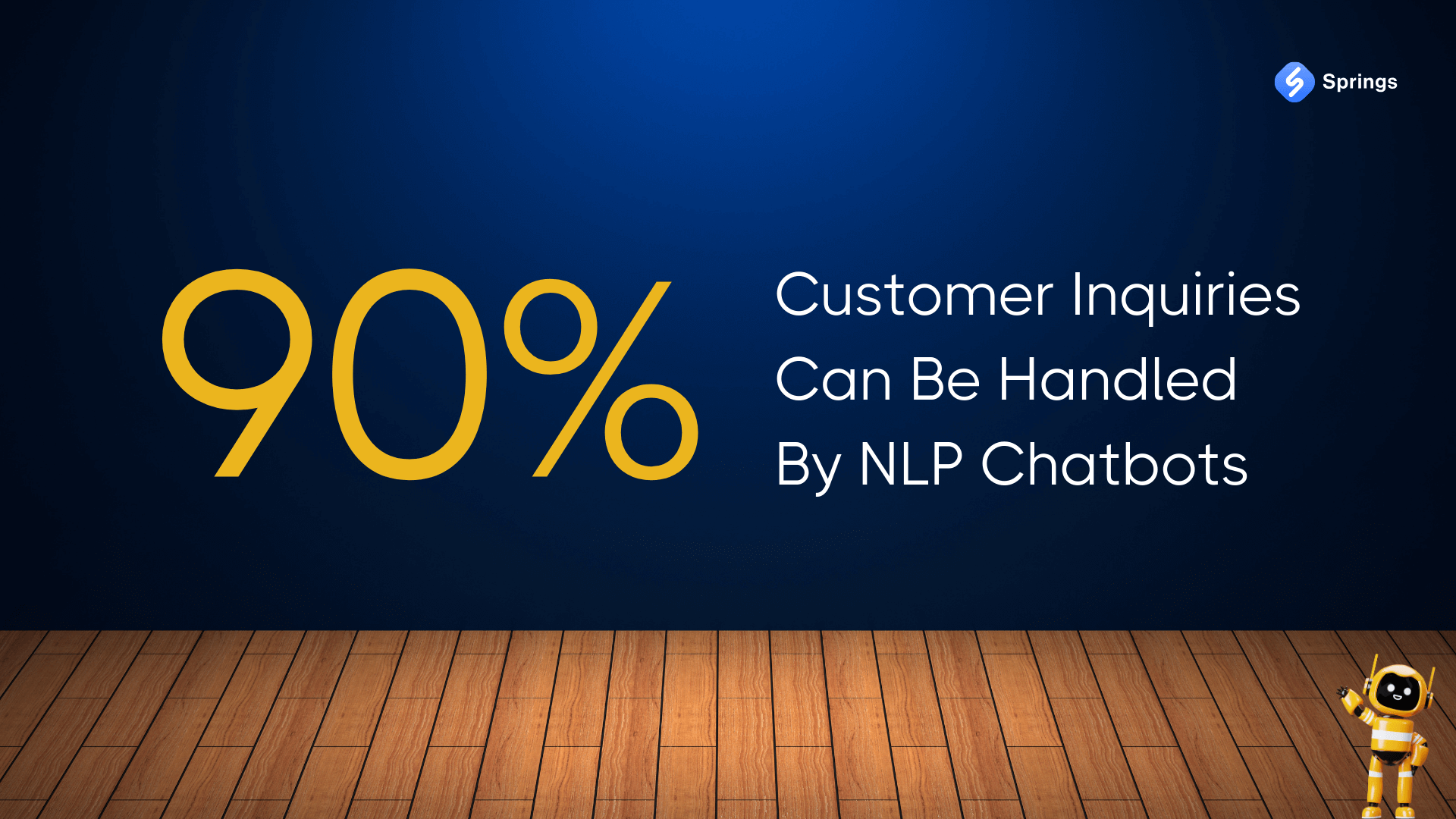
We must admit that in 2024, AI chatbots have undergone a significant transformation, evolving from basic conversational tools to advanced platforms for intelligent interaction. Today's chatbots are revolutionizing interactions across various industries, enhancing targeted marketing campaigns, and streamlining employee onboarding processes with unprecedented efficiency. The proper usage of NLP Conversational AI capabilities can achieve all this.
So, let’s try to find out the origin of a chatbot using NLP and how these chatbots can be helpful for your business.
What is an NLP Chatbot?
Natural Language Processing Chatbot or NLP chatbot is a programmed tool that uses natural language chatbot features to create human-like conversations by understanding and responding to text or voice inputs in natural language.
The basic structure of an NLP chatbot can be represented in the following way:
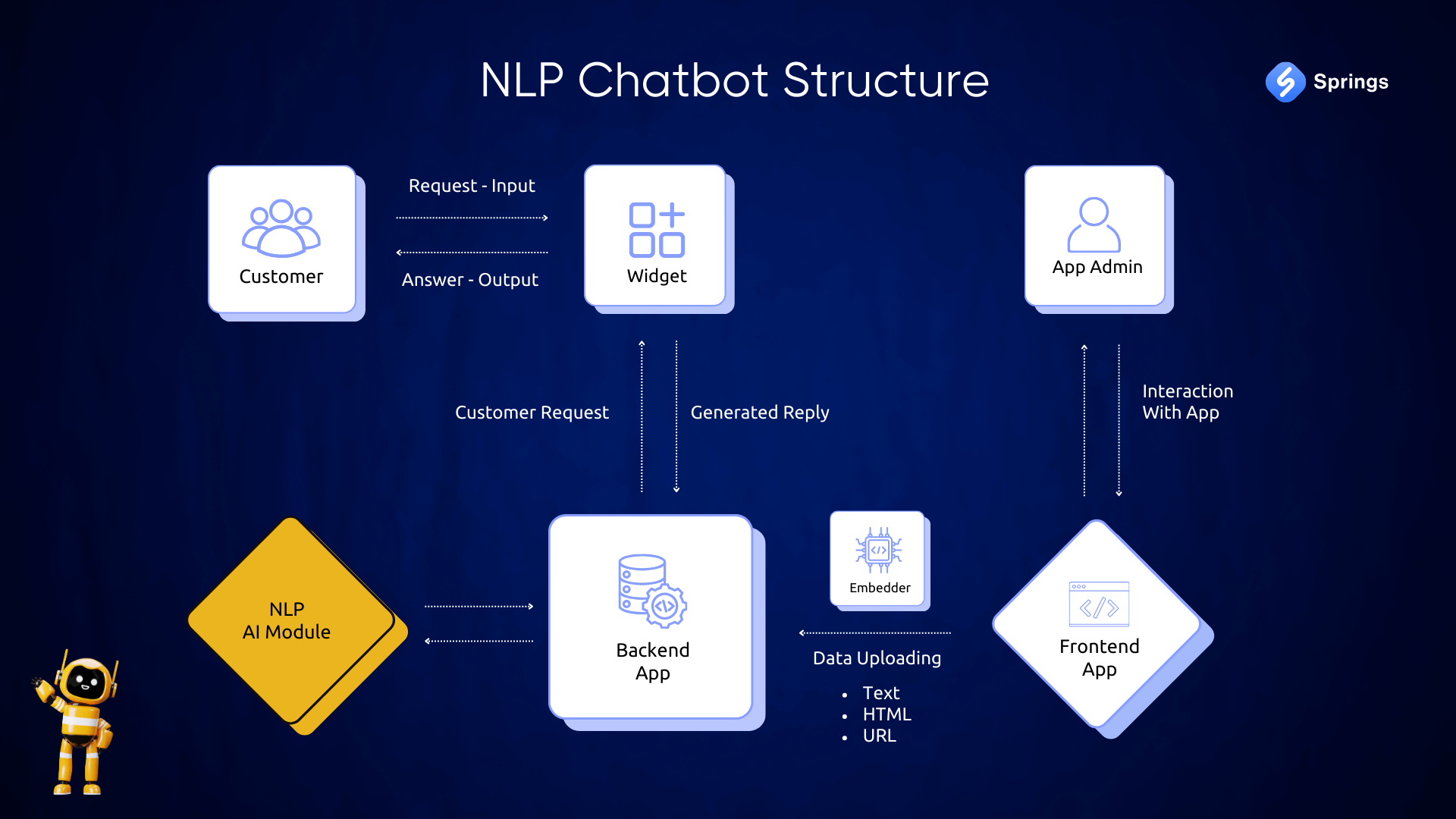
As we may see from the above, the basic NLP based chatbot consists of the following elements:
- NLP AI Module, where “all the magic happens” - usually a Python-coded module that processes human language requests and provides high-quality answers based on NLU and NLP capacities.
- Backend Application that provides a possibility to process all the requests from the users and connect to the NLP AI Module.
- Frontend Application - this is the UI/UX of your chatbot application with the possibility to register, log in, CRUD data, and interact with the chatbot.
- Embedder - an additional module that helps to upload the user’s embedded data.
- Widget - in simple words this is the “ chat window” where your customers interact with the chatbot application.
Overall, the NLP chatbot structure involves domain classification, which categorizes user inputs into specific conversation domains like Education or Fintech, customizing responses with industry-specific vocabulary. Chatbot Intent enables accurately identifying user intentions, such as tracking orders from queries like "check the status of my order." Additionally, entity extraction algorithms parse user queries to extract relevant information like location or date, enhancing contextual understanding for responses tailored to user needs and roles, such as discerning business hours based on conversation context.
Now, let’s move to the main part of these chatbots - the NLP AI Module, and see how NLP works.
How Does Natural Language Processing Work?
The best way to understand how NLP works is to refer to the popular existing solutions that we have on the market. Of course, the number one in this list will be OpenAI ChatGPT. This is the most popular open-source chatbot nowadays using Chat GPT NLP processor and the latest Large Language Model - ChatGPT-4o.
ChatGPT is a great example of using NLP in a chatbot, so let’s clarify how it works. NLP works through a series of AI algorithms that enable the model to understand and generate human-like text responses. Here’s how it generally operates:
- Tokenization. The input text is tokenized into smaller units (words or subwords) and encoded into numerical representations that the model can process. In this way, the NLP bot can process different sentences.
- Contextual Understanding. By the use of GPT (Generative Pre-trained Transformer) that encodes the context of the input text across multiple layers, the model understands the meaning and context of the conversation.
- Language Generation. Once the context is encoded, NLP in chatbot generates responses by predicting the next sequence of words that are most likely to follow based on the input context.
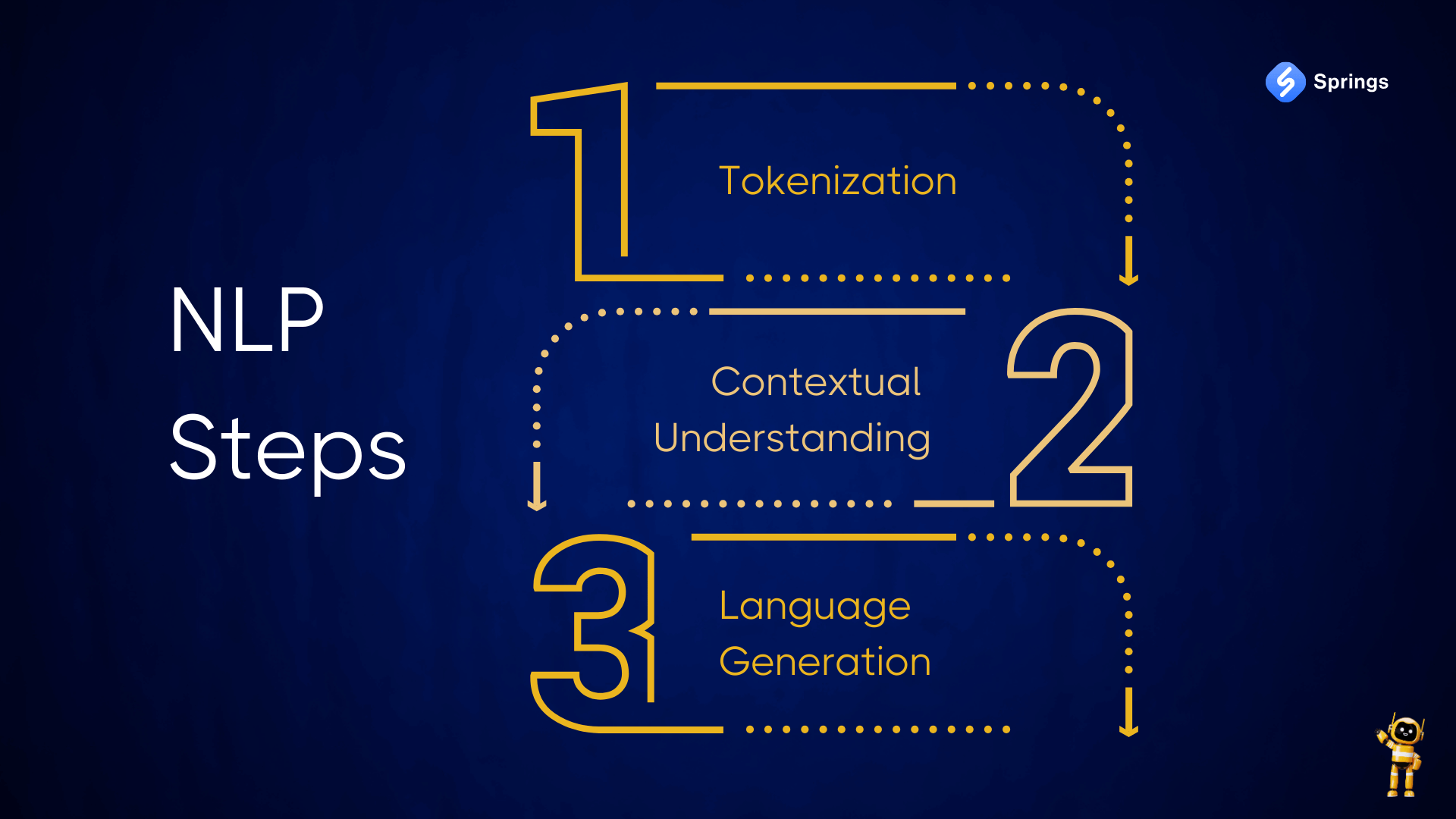
Overall, NLP combines top-notch machine learning techniques with large-scale pre-training and fine-tuning approaches to deliver great performance in generating human-like text interactions.
To sum up, a natural language chatbot works as a tool that tokenizes human language into embeddings, understands its contest, and generates human-language answers so the final users may get the proper answer to their queries.
If it still seems difficult to understand for you - feel free to contact us and get a free consultation on how NLP and chatbots can bring benefits to your business.
Regular Bots vs Chatbots vs NLP Chatbots
As far as we discovered what is NLP and how this term is connected to chatbots, let’s try to find out now the key difference between a regular bot, a chatbot, and an NLP chatbot.
The terms "bot" and "chatbot" are often used as synonyms, but they refer to different types of automated software with distinct functionalities. A bot is a general-purpose automated program designed to perform tasks, while a chatbot is a specific type of bot designed to interact with users through conversational UI, like chats, messengers, and so on. Chatbots are often customized by special Prompt Engineering techniques.
A simple regular bot usually has the following features:
- Automation. Makes repetitive tasks based on predefined rules or scripts without human intervention.
- Task Specificity. A bot is developed to perform specific functions like scheduling, notifications, or data retrieval.
- Trigger-Based Actions. Operates based on specific triggers or commands.
- Limited Interaction. Interaction is typically one-way and limited to commands given by users.
- User Interaction. Engages in two-way communication with users, simulating a conversation.
- Scripted Responses. Provides predefined responses based on user inputs.
- Service Integration. Often integrated with CRMs, like Hubspot, to provide automated assistance.
- Contextual Understanding. Limited contextual understanding, relying on basic keyword matching.
- Task Automation. Automates simple tasks like answering FAQs or providing basic information.
On the third side, we have “NLP Chatbots” that distinguish themselves from bots by using natural language processing to understand and respond to human language, enabling more sophisticated, context-aware, and conversational interactions with users. So, NLP based chatbot is designed like an extended version of a basic chatbot.
The table below should provide a more clear understanding of the difference between a bot, a chatbot, and an NLP chatbot based on various features:
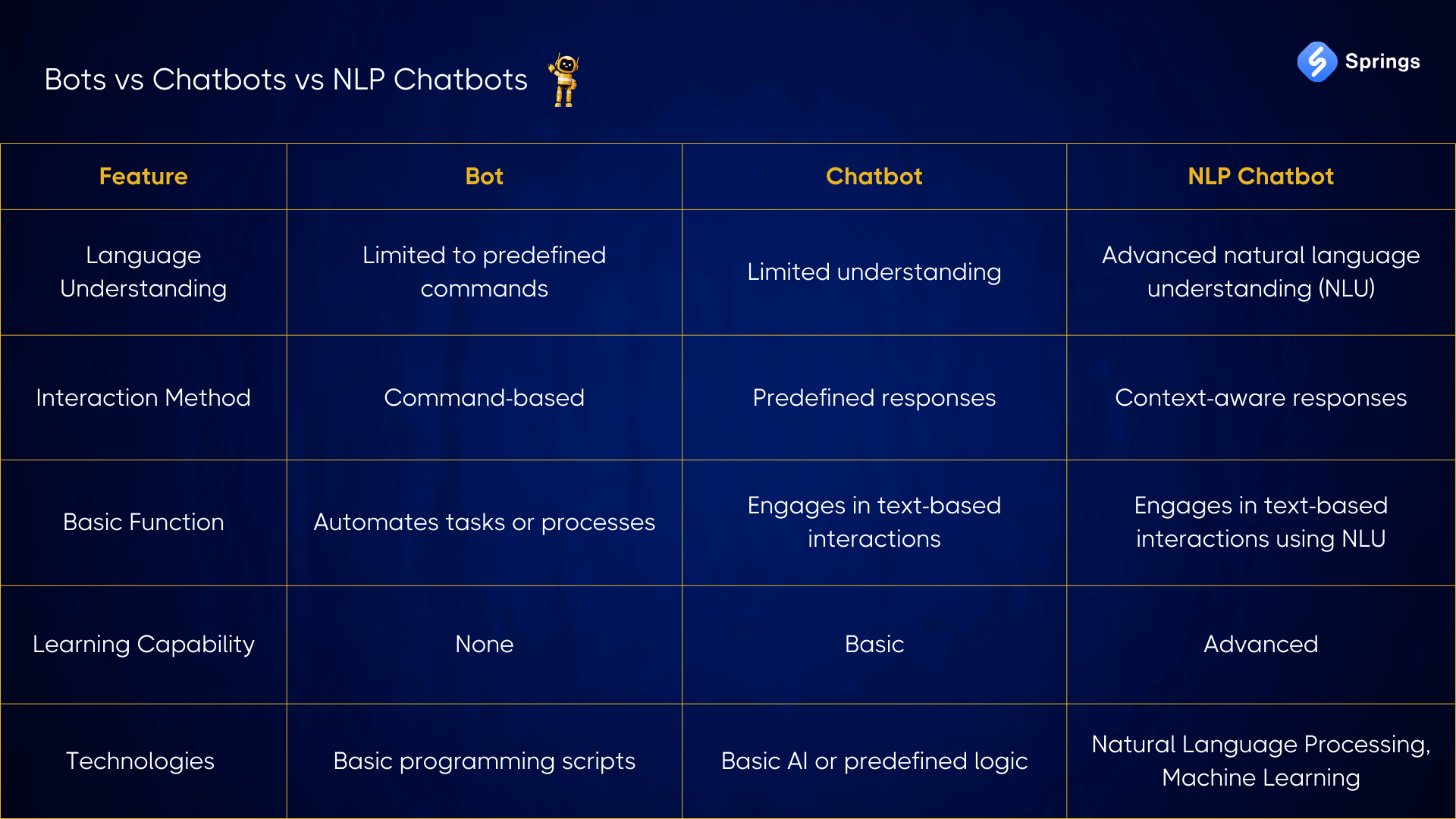
Overall, the Natural Language Processing Chatbot can be characterized by the following features:
- Conversation Tracking. Tracks the conversation state, managing context and session data from start to finish.
- Human Support. Enables seamless transition from AI chatbot to human agent when needed.
- Business Logic Integration. Ensures the chatbot is programmed with the company's unique business logic.
- Rapid Iteration. Provides a seamless customer experience and allows for quick adjustments to reach the best solution.
- Ongoing Self-Improvement. Systematic training and feedback improve the chatbot’s understanding of customer intents using real-world data.
Finally, we may conclude that bot automates specific tasks based on predefined rules, chatbot - simulates conversations with scripted responses, and NLP based chatbot - uses advanced language processing to understand and respond to user inputs contextually.
Key Features of NLP-powered Bots
According to AI Multiple research, 43% of the companies report that their competitors are already implementing chatbot technology, and around 50% of large companies are considering more investment in chatbots. These stats show us that the features of Conversational AI-based bots are used in almost half of businesses already.
So, to see why these chat gpt NLP or similar bots are so important for the business - let’s dive deeper into the exact features of an NLP bot and describe them in detail.
Human-Like Interactions
NLP chatbots usually emulate human-like interactions, which significantly improves user engagement and comprehension. By using top-notch AI technologies, natural language chatbot can interpret user inputs more accurately, respond in a more conversational tone, and maintain a fluid dialogue that feels more natural to the user.
This capability not only improves the overall user experience but also increases the likelihood of users interacting with the chatbot more frequently and for more extended periods.
Advanced Automation Capabilities
NLP based chatbot can handle a broader range of queries compared to traditional rule-based chatbots. AI NLP chatbot is usually developed to automate complex interactions that would typically require human intervention, such as troubleshooting technical issues, providing detailed customer support, and executing multi-step transactions.
This kind of automation capability completely reduces the dependency on human agents, allowing organizations to automate business processes, and handle a higher volume of interactions without losing quality.
Context-Aware Engagement
One of the core features of NLP chatbots is their ability to retain context throughout conversations. This means that the chatbot can remember previous actions within the same session and use that information to provide more personalized and relevant support.
By using NLP in a chatbot, the software can ask follow-up questions, clarify user intentions, and offer solutions that are specifically tailored to the user’s needs. This contextual engagement minimizes user frustration and enhances the overall efficiency of the interaction.
Springs team has extensive experience building NLP chatbots based on the features we are talking about here. Feel free to test live our AI NLP-chatbot Builder IONI which is based on the latest OpenAI LLM - ChatGPT4o.
If you need any consultation on how to use it or if you would like to integrate a custom chatbot into your business, please contact us, and our experts will guide you through it.
Enhanced User Satisfaction
NLP chatbots can provide responses within a short period of time, which significantly enhances user satisfaction and CSAT. By reducing the time users spend waiting for answers and simplifying the process of getting help, NLP and Chatbots create a more pleasant and efficient UX.
Additionally, the ability of Chat GPT NLP chatbots to understand and respond to user inputs accurately partly reduces the likelihood of miscommunication, further contributing to a positive user experience.
Operational Efficiency
Another important feature of NLP chatbots is their possibility to offer significant time and cost efficiencies. They can handle a large volume of inquiries at the same time, ensuring that users receive quick assistance without the need for extensive human intervention.
This not only reduces costs for business owners but also frees humans to focus on more complex and value-added tasks. As a result, companies and enterprises can allocate their resources more effectively, improving overall productivity and service quality.
What Types of Businesses Need NLP-chatbots?
There are many industries to implement NLP conversational AI: education, healthcare, fintech, ecommerce, automotive, logistics, and others. In this part of our article, we will try to find out what exact types of businesses can require a natural language processing chatbot, and how it can be particularly useful.
HR & Recruitment
In the area of constant people-to-people communication, NLP chatbots can bring a lot of benefits for screening candidates, scheduling interviews, and answering employee inquiries.
Moreover, with the help of custom AI/ML development, you can replace human work with an HR chatbot, and save resources accordingly.
Education
In this industry, an NLP chatbot can provide information about courses, help with registration processes, and student onboarding, and support multiple e-learning platforms or Learning Management Systems.
NLP Conversational AI for Education has already become a trend in the learning and teaching fields. Today, we can see more and more chatbots being integrated into eLearning software and this shows that NLP and chatbots are getting closer to each other in this area.
Springs team doesn’t stay far away from the education industry either. Our AI Platform for corporate learning ELAI has an integrated Chat GPT NLP Chatbot that covers almost 80% of incoming queries from existing clients. In this way, platform users receive replies 24/7 without waiting for the human agents.
E-commerce & Retail
eCommerce is another large field for the integration of Natural Language Processing Chatbot. A lot of online shops suffer from the lack of resources needed for ongoing customer support. And this is exactly where NLP in chatbot plays an important role.
It can assist with absolutely different tasks: product recommendations, order tracking, user registration & management, providing information about goods & services, and many other customer inquiries related to eCommerce or retail.
Healthcare
The medical industry together with the general healthcare area provides a perspective opportunity for AI NLP Chatbots. Medical doctors, patients, pharmacy owners - all these categories of people usually need assistance with either providing services on the highest level or receiving services on the same level.
So, in this way, the NLP chatbot can assist doctors in multiple ways during their “paperwork”, help schedule appointments with patients, or provide medical information to the patients 24/7.
Finance
In the field of financial services, NLP chatbots can handle customer inquiries related to account balances, transaction histories, and account settings, providing instant and accurate information. Moreover, they assist in monitoring transactions, detecting fraudulent activities, and facilitating transfers or payments, ensuring secure and efficient processing.
Connecting NLP and chatbots can also offer personalized financial advice, investment tips, and budget management based on individual customer profiles and market trends.
Travel & Hospitality
Millions of people travel every day, and all travelers usually need some assistance in airports, railway stations, and other places. We have previously written about how AI can transform the aviation industry. A similar situation may be seen with NLP Travel Chatbots.
By analyzing user preferences and travel history, NLP chatbots can suggest destinations, activities, and travel itineraries tailored to individual needs. Moreover, a correctly designed NLP bot can help users book flights, hotels, and rental cars.
And, for sure, NLP-based chatbots provide support with itinerary changes, cancellations, and other travel-related issues, ensuring a comfortable travel experience for the passengers.
Telecommunications
Connection and Network are the things we can’t imagine the modern world without. So, in the industry of telecommunications chatbots can be useful too.
NLP conversational AI based bots can assist customers in diagnosing and resolving technical issues with their devices or services, providing step-by-step guidance. In this way, IoT combines with AI too.
Additionally, by understanding user needs, such chatbots can suggest the most suitable data, voice, and internet plans. They handle billing inquiries, service activations, and upgrades, delivering efficient customer support.
How to Build NLP Bots?
Now, let’s focus on NLP bots building and try to understand how they can be developed using the latest software development and AI technologies.
So, there are three of the most popular ways to develop NLP based Chatbot:
- Building a custom chatbot solution
- Developing by frameworks
- Using chatbot platforms
- Custom Chatbot Solution
The development of an NLP AI chatbot from scratch requires a deep understanding of both AI/ML development techniques and NLP proficiency. This method is suited for experienced developers with strong coding skills.
The process typically involves using programming languages like Python and NodeJS along with NLP libraries such as Natural Language Toolkit (NLTK) or spaCy. This approach is complex and we recommend hiring professional companies like Springs or similar that specialize in custom chatbot development and can provide high-level services.
Developing by Frameworks
Another option to create a Chat GPT NLP chatbot or chatbot based on other LLMs is using existing open-source NLP chatbot frameworks, such as Microsoft Bot Framework, Amazon Lex, IBM Watson, and Google Dialogflow.
These frameworks provide essential building blocks for chatbot development. However, a significant amount of coding and technical expertise is still required to effectively implement and customize these NLP architectures.
Using Chatbot Platforms
The simplest and fastest method for developing an NLP chatbot is to use ready-made NLP chatbot platforms. These platforms usually offer a comprehensive, no-code solution for creating and using chatbots. Users only need to configure separate bot workflows for different user intents based on common requests.
However, the biggest issue for these platforms is that they can’t provide full customization and fine-tuning chatbots to our business. So, it can become an issue for some business owners who expect to have a customizable solution.
Overall, you can choose to build from scratch for maximum customization, use existing frameworks for a balance of flexibility and efficiency, or go for ready-made platforms for simplicity and ease of deployment.
Common Challenges of NLP Bots
We have already found out that an NLP bot is a useful technology for many types of businesses. However, as with any other technology natural language chatbot can face some challenges and issues while it is being used live. Let’s try to dive deeper into them.
Issues
- Ambiguity in Language. Natural language can be ambiguous in some way, and some users may express the same intent in various ways, making it difficult for the natural language processing chatbot to understand and respond accurately.
- Handling Diverse Accents and Dialects. Voice-based NLP bots may have trouble recognizing speech from users with different accents or dialects.
- Data Privacy and Security. Ensuring that user data is handled securely and in compliance with data protection regulations is a critical challenge.
- Scalability. As user interactions grow, the NLP bot must be able to handle increased load without compromising performance.
- Integration with Other Software. The integration with existing custom-made enterprise systems and workflows can be complex, however, it can be solved by API or Webhooks connections.
- Training Data Quality. The performance of NLP Generative AI bots heavily relies on the quality and quantity of training data, which can be difficult to obtain and curate.
- User Frustration. The inability to understand user queries accurately can lead to user frustration and decreased satisfaction with the natural language chatbot.
How to Address Issues
We completely understand that no technology in the world has any issues. But the key point is not the issues themselves but the ways to address them.
Addressing these problems involves implementing advanced context management techniques to maintain conversational flow, providing sophisticated NLP algorithms to handle language ambiguity, and using top-notch speech recognition systems to accommodate diverse accents.
Ensuring data privacy and security through encryption and compliance with regulations is critical, while scalability can be achieved with different cloud-based solutions, like AWS.
The seamless integration with existing software requires careful planning and the use of APIs. High-quality training data should be curated continuously, and the NLP bot must be regularly updated to adapt to new languages.
Overall, all these challenges can be addressed through ongoing work and different methods that can prevent them in the future.

